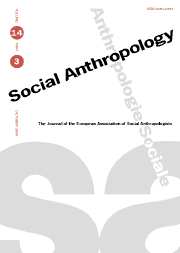Natives with jackets and degrees. Othering, objectification and the role of Palestinians in the co-existence field in Israel
Published online by Cambridge University Press: 09 April 2001
Abstract
The co-existence field in Israel is a rather loose array of NGOs and government sponsored organisations. Its main trajectory since the 1980s was structured meetings between Jewish Israelis and Palestinian citizens of Israel at intermediate and secondary school levels. It is, ostensibly, a mutual affair, enabling actors on both sides to experience each other first hand as a means to improve relations and reduce tension. A closer examination, however, reveals that key aspects of the field were in designed primarily for Israeli consumption. Palestinian participants and moderators thus tend to become objectified, mere illustrations in an all-Israeli debate which takes place, as it were, above the Palestinian's head.
The history of the field is briefly sketched, followed by an analysis of the theoretical, ideological and political assumptions of two of the main schools of thought within it. The role of Palestinians is then examined, using input from ethnographic interviews and content analysis of published material. This becomes the basis for an alternative historicisation of the field, re-framed within the political and social context of Israel since 1977.
- Type
- Research Article
- Information
- Copyright
- © 2001 European Association of Social Anthropologists
Footnotes
- 2
- Cited by


